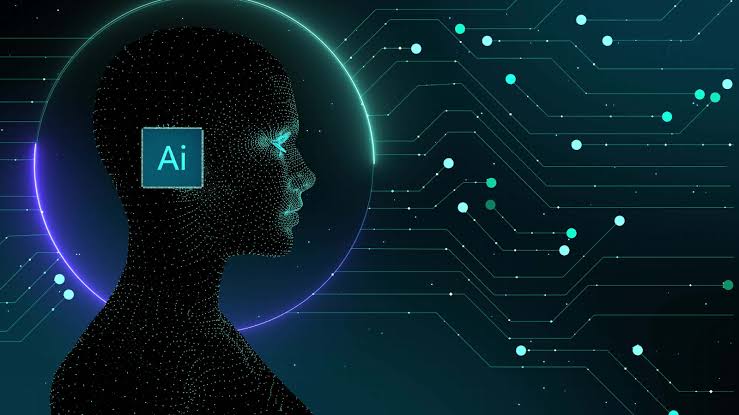Artificial Intelligence (AI) has increasingly become cornerstone of modern technology. It is transforming industries and altering how we interact with digital systems. At its core AI is about creating systems. These systems can perform tasks requiring human-like intelligence. This extensive exploration of AI will delve into fundamental concepts, key techniques applications and future directions. It will provide comprehensive understanding of intelligent systems.
Artificial Intelligence encompasses broad range of technologies designed to simulate human intelligence. This includes ability to learn reason and solve problems. AI systems can process and analyze vast amounts of data. Far beyond human capacity, making them invaluable in various fields. The primary goal of AI is to enable machines to perform tasks. That typically require human intelligence such as understanding natural language. Recognizing patterns. And making decisions.
The journey of AI began in 1950s with pioneers like Alan Turing. He proposed concept of machines that could think. Turing’s work laid foundation for the Turing Test. This test measures a machine’s ability to exhibit intelligent behavior indistinguishable from that of human. Early AI research focused on symbolic AI and rule-based systems. Machines were programmed with explicit instructions.
The field experienced several cycles of optimism and disillusionment, known as "AI winters," during which funding and interest waned due to unmet expectations. However, breakthroughs in machine learning and computational power in the 21st century revitalized the field, leading to significant advances in AI technologies.
Key Techniques in AI
1. Machine Learning: A subset of AI, machine learning involves training algorithms to improve performance based on experience. Instead of being explicitly programmed, systems learn from data. Common machine learning techniques include supervised learning, where models are trained on labeled data, and unsupervised learning, which involves identifying patterns in unlabeled data.
2. Deep Learning: An advanced subset of machine learning, deep learning utilizes neural networks with many layers (hence "deep") to analyze data. Deep learning has driven many recent AI advances, particularly in image and speech recognition. Convolutional Neural Networks (CNNs) and Recurrent Neural Networks (RNNs) are prominent architectures used in deep learning.
3. Natural Language Processing (NLP): NLP enables machines to understand and generate human language. It involves tasks such as language translation, sentiment analysis, and speech recognition. Advances in NLP have led to the development of sophisticated language models that can generate coherent and contextually relevant text.
4. Reinforcement Learning: This technique involves training models to make sequences of decisions by rewarding desired behaviors and penalizing undesired ones. Reinforcement learning has been successfully applied in robotics, game playing, and autonomous vehicles, where agents learn to navigate complex environments through trial and error.
Applications of AI
1. Healthcare: AI is revolutionizing healthcare by enabling predictive diagnostics, personalized treatment plans, and drug discovery. AI algorithms analyze medical images to detect diseases, predict patient outcomes, and assist in clinical decision-making. AI also helps in managing patient data and streamlining administrative tasks.
2. Finance: In finance, AI is used for fraud detection, algorithmic trading, and risk management. Machine learning models analyze transaction patterns to identify fraudulent activities and optimize trading strategies based on historical data. AI-driven chatbots provide customer support and handle routine inquiries.
3. Transportation: Autonomous vehicles and smart transportation systems are prime examples of AI in action. AI algorithms enable self-driving cars to interpret sensor data, navigate roads, and make real-time decisions. AI also optimizes traffic flow and improves logistics and supply chain management.
4. Retail: AI enhances the shopping experience through personalized recommendations, inventory management, and customer service. Retailers use AI to analyze customer behavior, predict demand, and optimize pricing strategies. AI-powered chatbots assist customers with inquiries and provide product recommendations.
5. Education: AI in education includes intelligent tutoring systems, personalized learning platforms, and administrative tools. AI can assess student performance, adapt learning materials to individual needs, and automate grading. Virtual tutors provide additional support to students, enhancing the learning experience.
Ethical and Societal Implications
As AI continues to evolve, it raises important ethical and societal questions. Issues such as data privacy, algorithmic bias, and job displacement require careful consideration. Ensuring transparency, accountability, and fairness in AI systems is crucial to addressing these challenges. Ethical AI development involves creating guidelines and standards to mitigate negative impacts and promote beneficial outcomes.
The Future of AI
The future of AI holds immense potential and challenges. Advances in AI research are likely to lead to more sophisticated and capable systems. Emerging trends include the integration of AI with other technologies such as blockchain and quantum computing, which may unlock new possibilities for innovation.
As AI systems become more prevalent, interdisciplinary collaboration will be essential for addressing complex problems and ensuring that AI benefits society as a whole. Ongoing research will focus on improving the interpretability of AI models, enhancing human-AI interaction, and developing AI that aligns with human values and ethical standards.
Conclusion
Understanding the science of artificial intelligence involves exploring its history, techniques, applications, and future directions. AI’s ability to simulate human intelligence and perform complex tasks has transformative potential across various domains. By grasping the fundamentals of AI, its applications, and ethical considerations, we can better navigate its impact on technology and society. The continued advancement of AI promises to reshape our world, offering new opportunities and challenges for innovation and growth.
